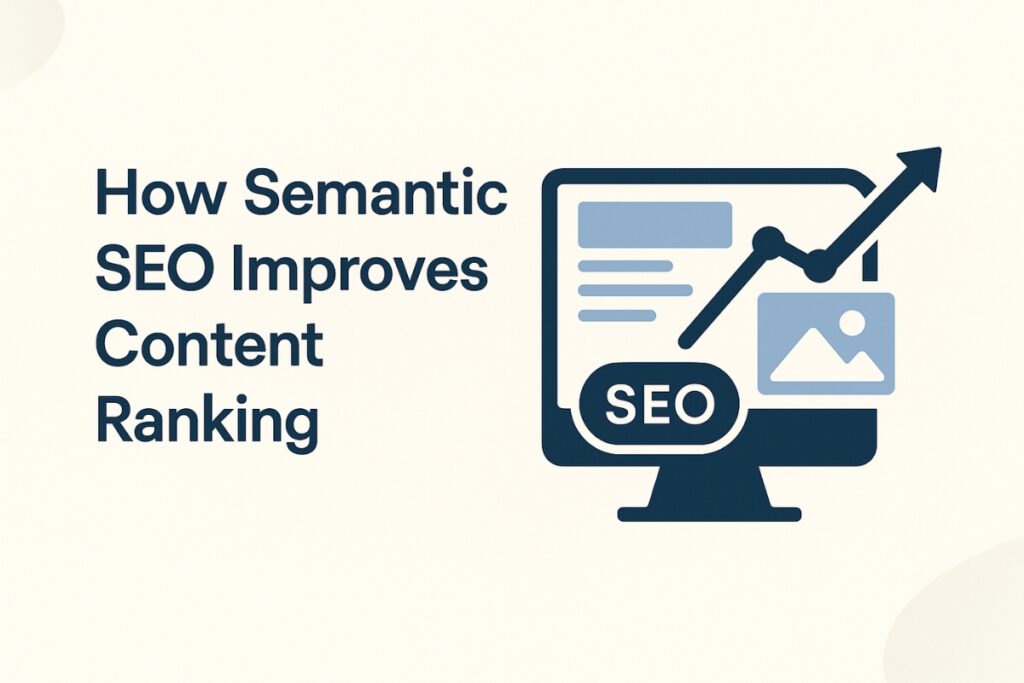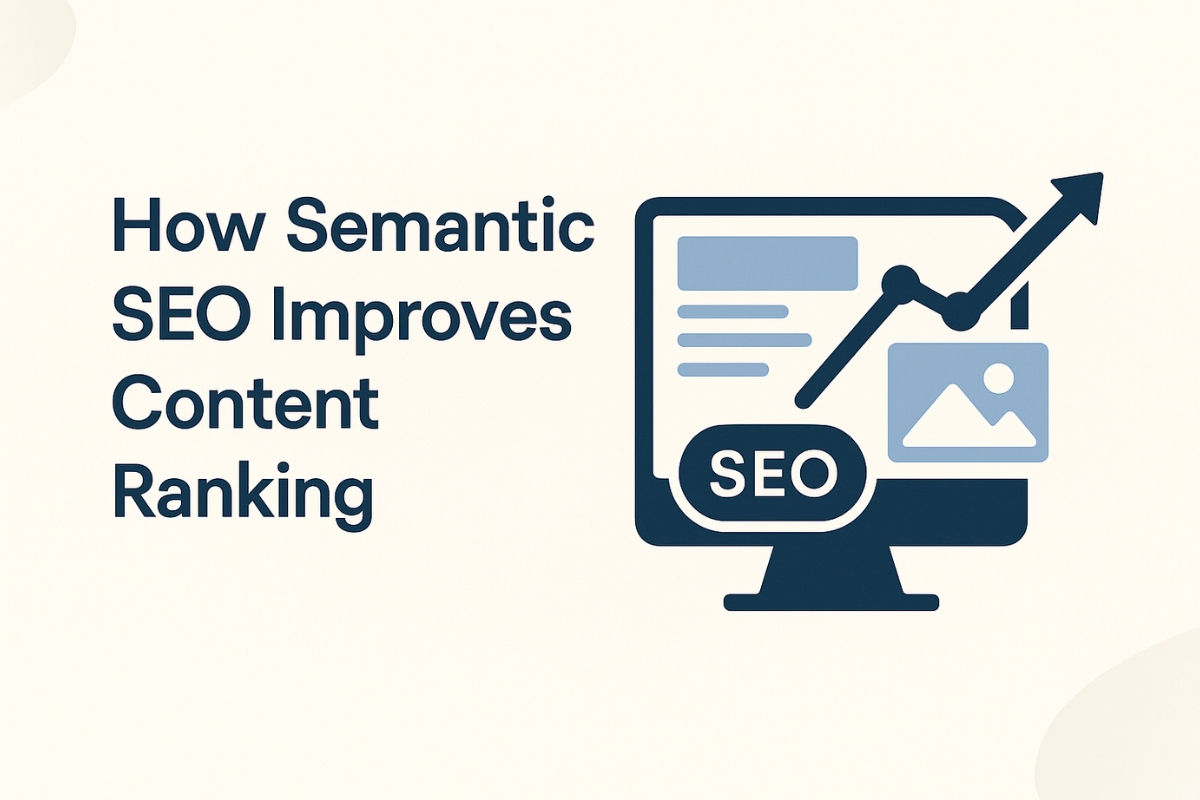Semantic SEO is the powerful strategy that helps search engines truly understand your content beyond simple keywords. Instead of repeating the same phrases, semantic SEO focuses on context, intent, and meaning.
This approach builds topic authority and boosts rankings naturally. When done correctly, it positions your content as the most valuable answer for users, not just a keyword match. For more insights on startup tech and digital growth, explore the Rteetech homepage.
What Is Semantic SEO and Why It Matters

Semantic SEO is the process of creating content that answers real user intent rather than stuffing keywords. It focuses on topics, questions, and related concepts. Search engines like Google now understand language like humans.
They analyze what your page means, not only what words you use. This change rewards pages that offer clarity, depth, and relevance.
Traditional SEO relied on exact keywords. But with semantic search, Google checks how well your content explains a topic. If your article covers multiple subtopics and provides accurate answers, it ranks higher. That is why semantic SEO improves content ranking and builds long term authority.
How Semantic SEO Improves Content Ranking
Semantic SEO improves ranking by aligning content with user intent. When a search query is typed Google tries to understand the problem behind it. If your content covers definitions examples comparisons and common questions it becomes a complete solution.
This approach reduces bounce rate and increases dwell time because users stay longer and find what they need. As a result, search engines trust your page more. Semantic content also ranks for multiple keywords automatically, helping you gain wider visibility without writing duplicate pages.
Understanding User Intent in Semantic SEO
User intent is the foundation of semantic SEO. Every search has a goal. Users might want to learn, compare, buy, or solve a problem. Semantic content answers these goals clearly.
- Informational intent: users seek knowledge
- Navigational intent: users look for specific pages
- Transactional intent: users plan to take action
By understanding these intents, you write content that feels helpful, not robotic. Search engines reward helpfulness with better ranking.
Use Topic Clusters for Semantic Authority

Topic clusters organize content around a main subject with supporting subtopics. Instead of writing random articles, build a pillar page and link related pages around it.
For example, a main topic on semantic SEO can link to subtopics like user intent, structured data, and keyword context. This structure signals topical authority. When Google sees complete coverage, it ranks your content as a trusted source, improving visibility.
How LSI Keywords Boost Semantic SEO Performance
LSI keywords, or Latent Semantic Indexing keywords, are related terms and phrases that help search engines understand the context of your content. By naturally including LSI keywords, your article covers a topic comprehensively rather than focusing on a single keyword.
This improves semantic relevance, increases chances of ranking for multiple related searches, and enhances user engagement by providing thorough answers to queries.
Integrating LSI keywords strategically also supports content clustering, helping Google recognize your page as an authority on the subject.
Role of LSI Keywords in Semantic SEO
Latent Semantic Indexing keywords are terms related to your topic. They strengthen context and depth. Instead of repeating your main keyword, use related words naturally.
For example, with the focus keyword how semantic SEO improves content ranking, use supporting phrases like:
- Semantic SEO content optimization
- Improve content ranking with semantic search
These terms help search engines understand that your page answers various angles of the topic. LSI keywords expand reach and boost relevance.
How to Write Semantic Content Effectively
To create semantic content, follow these steps:
- Start with a question or problem
- Provide definitions and simple explanations
- Cover related subtopics and common questions
- Use natural language and conversational tone
- Avoid keyword repetition and forced phrases
This method helps your page become a complete resource. When your article feels like a guide instead of a keyword trap, users stay longer, improving ranking signals.
Benefits of Semantic SEO Over Traditional SEO
Semantic SEO offers long term strength in organic search. Key benefits include:
- Ranks for multiple keywords
- Increases topical authority
- Improves user satisfaction
- Enhances engagement metrics
- Reduces need for separate keyword pages
Unlike old SEO methods, semantic optimization focuses on value. It adapts to modern algorithms like Google Hummingbird and BERT, which prioritize intent and meaning.
Common Mistakes to Avoid in Semantic SEO

Avoid these common errors when implementing semantic SEO:
- Writing shallow content with repeated keywords
- Ignoring user questions and intent
- Lacking subtopic coverage
- No internal linking between related pages
- Skipping structured data or FAQ sections
These mistakes limit your topical depth and reduce ranking chances. Semantic SEO demands complete answers, not short surface-level posts.
Conclusion
Semantic SEO transforms content into meaningful answers. It improves ranking by focusing on intent, relevance, and coverage. When you write for human understanding rather than algorithm tricks you build trust and authority. Search engines reward pages that solve real problems.
By using topic clusters, LSI keywords, and natural explanations, your content becomes a lasting resource. That is how semantic SEO improves content ranking in today’s search landscape. learn more about our SEO for business growth strategies instead of just “Rteetech LCC”.
FAQs
What is the main goal of semantic SEO?
The main goal of semantic SEO is to align content with user intent and explain topics in depth. This approach is essential when understanding how semantic SEO improves content ranking by delivering complete answers rather than relying on exact keywords.
Can semantic SEO help rank for multiple keywords?
Yes, semantic content can naturally rank for related terms and long-tail queries. When you understand how semantic SEO improves content ranking, you realize that covering related subtopics helps capture more keyword variations.
How do LSI keywords support semantic SEO?
LSI keywords add context and depth to your content. They help search engines grasp the true meaning of your page, which is a key factor in how semantic SEO improves content ranking across multiple search intents.
Is semantic SEO better than keyword stuffing?
Absolutely. Semantic SEO builds trust, clarity, and engagement, while keyword stuffing harms rankings. A strong understanding of how semantic SEO improves content ranking encourages high-quality, user-focused writing.
Does semantic SEO require long content?
Not always, but in depth content often performs better because it answers more user questions.
How does semantic SEO affect user experience?
It improves clarity, engagement and satisfaction, leading to longer page visits.
Can beginners use semantic SEO?
Yes, by focusing on intent, answering questions and covering topics deeply.
Is structured data part of se mantic SEO?
Yes, structured data adds clarity to content and helps search engines understand context.



